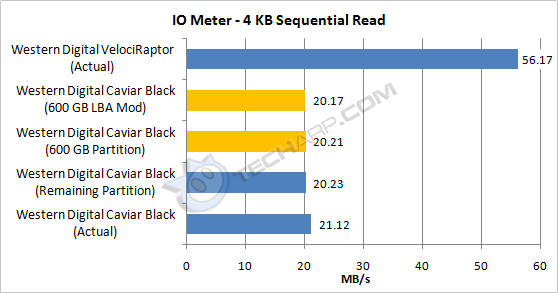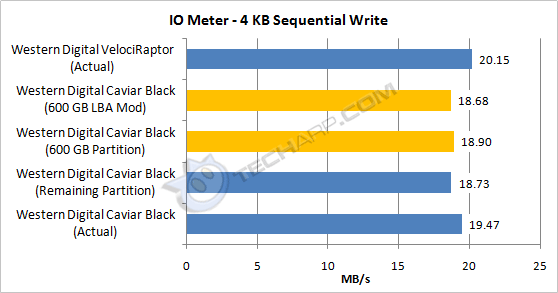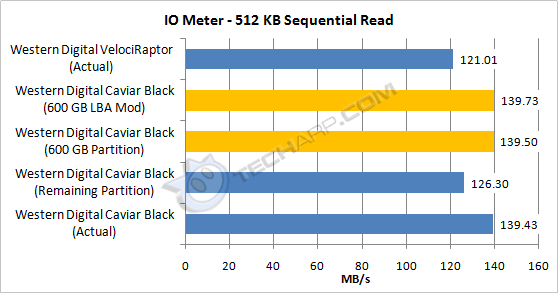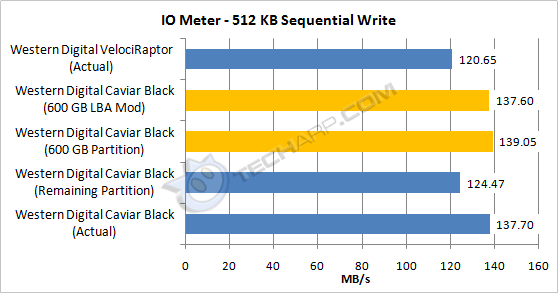IO Meter Sequential Access Results
4 KB Sequential Read

As we pointed out in the beginning of the article, short stroking will not improve sequential accesses because the distance between each bit remains the same. Thus, there can be no improvement in the sequential access time. True enough, short stroking the Western Digital Caviar Black had absolutely no effect on its performance. The only way to improve sequential read performance would be to increase the platter's bit density, or its spindle speed.
4 KB Sequential Write

The same thing was seen in the write test too. Short stroking the drive did not have any effect on the small sequential write performance. Incidentally, the short stroked results may appear a little slower than the unmodded drive results, but the difference is minimal at just 3%, which is within the margin of error.
512 KB Sequential Read

This test shows the limitation of benchmarks. The results show that even the unmodded Caviar Black is significantly faster than the VelociRaptor. Is that really possible?
The answer is yes, but only if both drives are filled to the brim, and the data is accessed across the entire capacity on an equitable basis, or in other words, the placement of the data is not optimized according to use (e.g. frequently-used data moved to the faster tracks). However, that is not how the real world works.
In a real world situation where drives are rarely filled to the brim and disk defragmentation software are commonly used, the Caviar Black is unlikely to score such a large advantage over the VelociRaptor. Unfortunately, benchmarks cannot test for such situations, which is why we cannot just rely on numbers - we have to interpret them too.
512 KB Sequential Write

We see the same situation in the large, sequential write test. You will note that in both the read and write test results, the slower 1.4 TB partition is significantly (10%) slower than the short-stroked and unmodded Caviar Black results. This is because the benchmark is only accessing the slower 1.4 TB partition, which has a transfer rate range of just 75-131 MB/s.
Support Tech ARP!
Help support our work by visiting our sponsors, participate in the Tech ARP Forums, or even donate to our fund. Any help you can render is greatly appreciated!
Support us by buying from Amazon.com! |
|
| Grab a FREE 30-day trial of Amazon Prime for free shipping, instant access to 40,000 movies and TV episodes and the Kindle Owners' Lending Library! | |







 Add to Reddit
Add to Reddit
